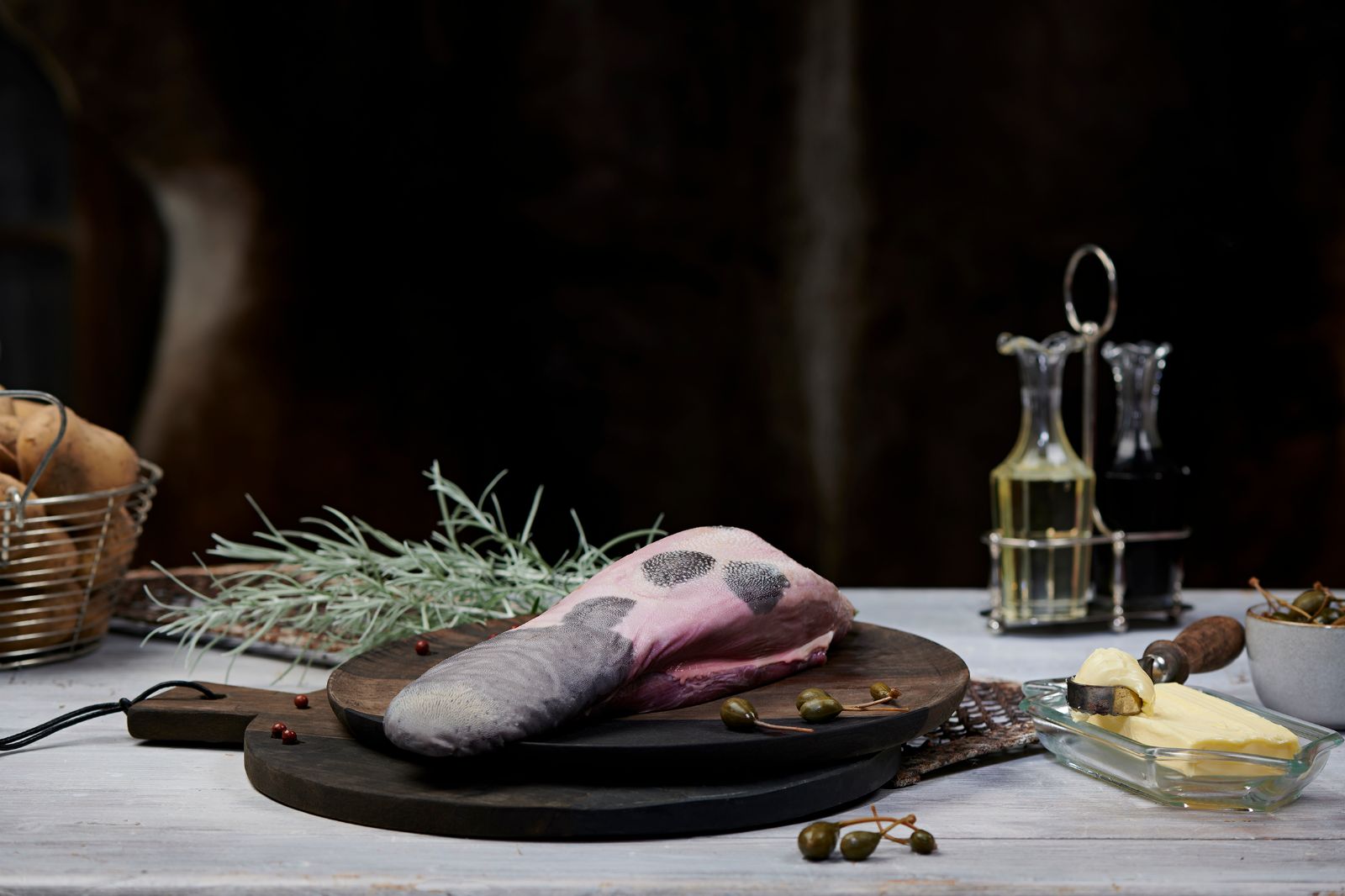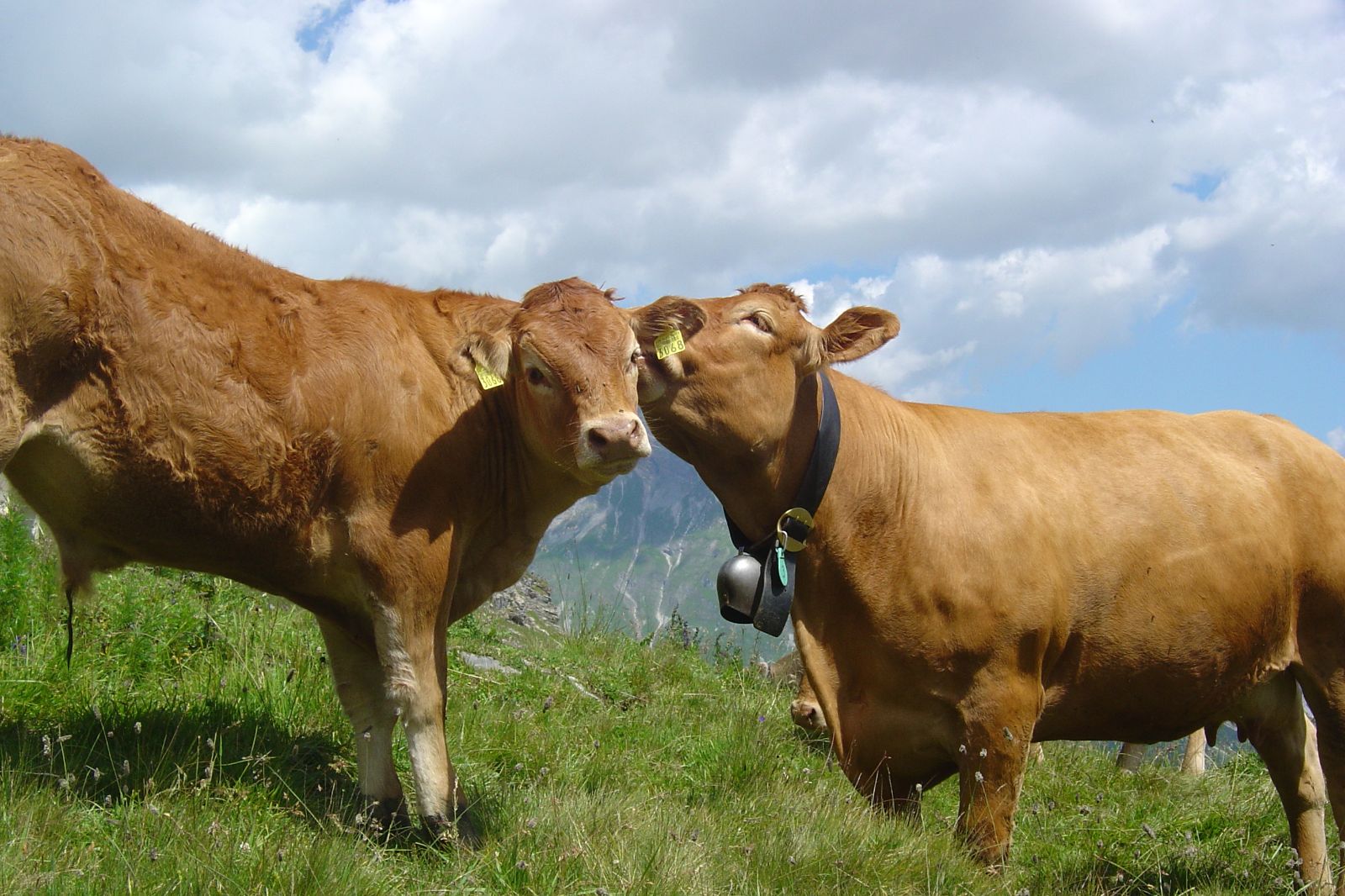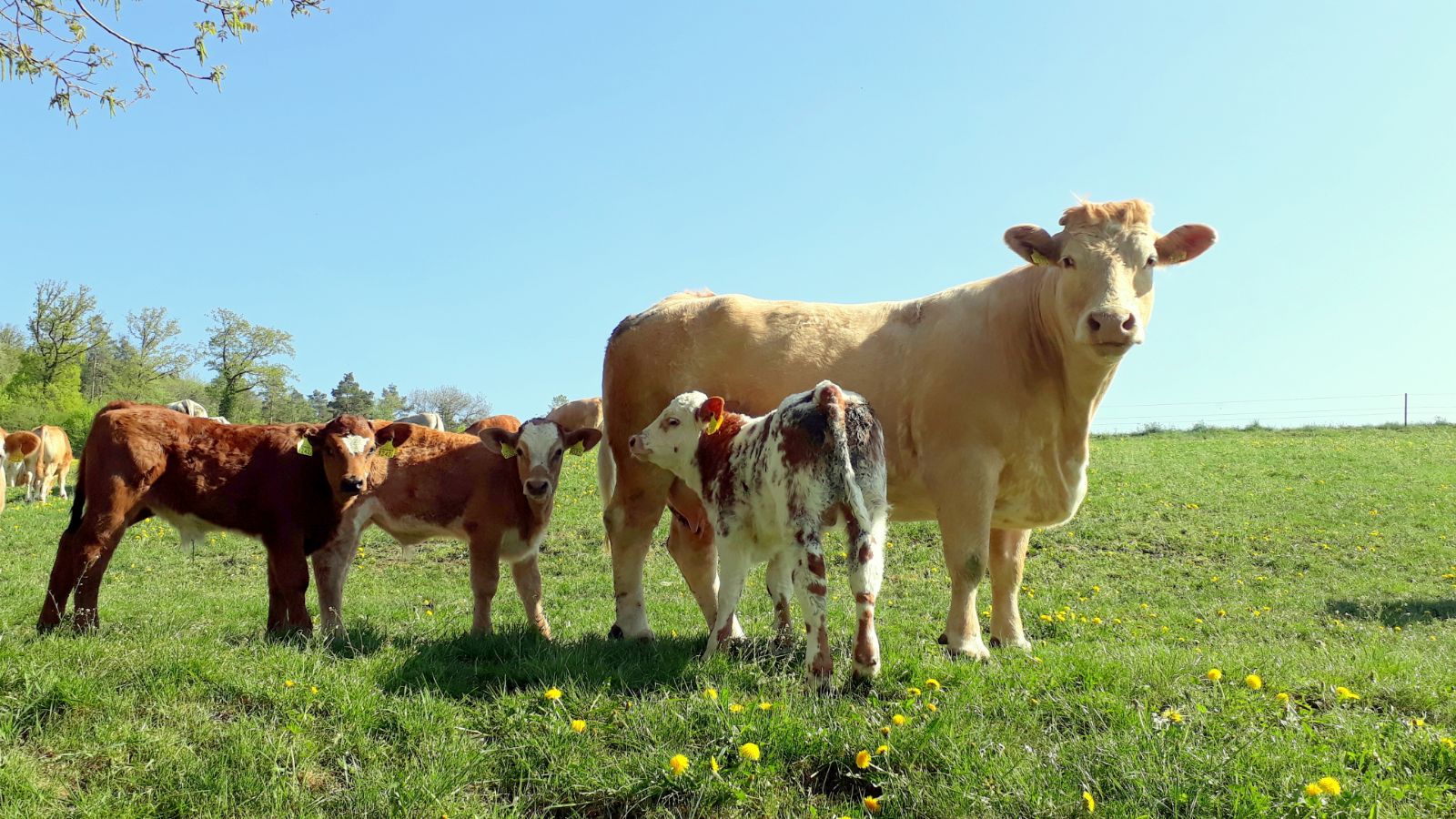Bell, Tichel, Plumpe, Rolle…
The names of the different bells vary considerably by region – both in German-speaking and French-speaking Switzerland. (Source: Treicheln Schellen Glocken – Sonnailles et cloches by Robert Schwaller, 1996)

Bells or tichels are forged from sheet iron, copper or brass. The sheets are riveted or welded on the sides. Often they have a coating of copper or brass, which protects them from corrosion and gives them a better tone.
Bells are cast from hot liquid precisely mixed alloys of copper and tin. Bells are relatively rarely seen on cow pastures. Often they are veritable showpieces, richly decorated on similarly adorned leather straps.
Large bells are above all used on festive occasions, for example at a beef.ch and the ‘Alpabzug‘ or descent from the alp. (Photo: Christina Müller)

The third ‘bell type‘ is called a roller or roller clamp. Rollers are spherical clamps with a loose round stone or a small iron ball inside. The ‘roll‘ gets its name from its rolling clapper, and is also called a frog’s mouth, reflecting its exterior. For horse-drawn vehicles, round ‘rollers’ are often used singly or mounted by the dozen on straps as “scoops” but also “bells” made out of several little bells that are tuned to each other.

In Switzerland, roller clamps or bells were compulsory for a long time in woodcutting, so that the horses could be heard by the workers when cutting wood and not accidentally struck by falling trees. (Photo: zugpferde.ch)
By the way, Andrew Bond has written a song on the theme of bells, jingles and strings. Listen in here : Glocken, Schellen und Treicheln.
Sources: «Treicheln Schellen Glocken» von Robert Schwaller, www.ingolstadt.de, UFA Revue, Swissbells
more comments
- ← Previous
- 1
- 2 (current)
- 3
- Next →







